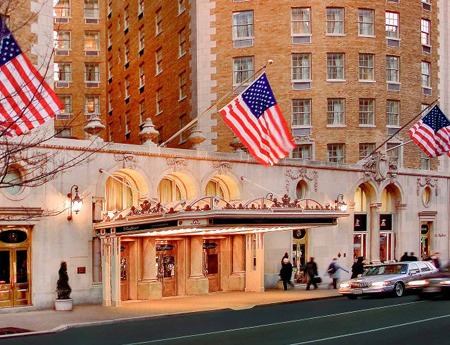The Roots of ‘Fame’

B&C is busy preparing for its 25th annual Hall of Fame induction gala, an event that draws an A-list, bicoastal crowd with plenty of red-carpet glitz and inside-the-Beltway pizzazz.
The event began a quarter-century ago in Washington, D.C., as part of a salute to the magazine’s past. It became a foreshadowing of B&C’s future expansion into covering more sectors of the industry and the move of its headquarters to New York.
Don West was the top editor back in 1991, when B&C combined its 60th anniversary celebration with a dinner at the Mayflower Hotel to induct 60 luminaries into a new Hall of Fame created at the urging of new owners, Cahners Publishing, which also owned the veteran Hollywood trade, Variety.
At the time, West said of that initial class of inductees, writing in the inaugural program for the event: “They form the first rank in a long line of broadcasting/cable men and women who gave their best to those media.”
Even then, with the uniting of “broadcasting/cable,” West was anticipating the move two years later to change the name of the magazine from Broadcasting to Broadcasting & Cable, reflecting its long history of covering cable since it was a few wires strung across the mountains by stores trying to sell TV sets.
In establishing the Hall of Fame, the magazine said its goal was to “recognize broadcasters, cable operators, visionaries, statesmen, engineers, entrepreneurs, journalists, programmers, entertainers and others who have made the media better for being there.”
B&C was founded in 1931, so even that first class of inductees had mostly grown up with the publication (and frequently had landed their first jobs via its classified ads). That would be reflected in the event’s acceptance speeches over the years. One familiar refrain both at the dinner and in the wider media world was that the magazine was read back to front, starting with the classifieds.
Broadcasting & Cable Newsletter
The smarter way to stay on top of broadcasting and cable industry. Sign up below
That long line of honored industry executives has grown a lot longer over the years, with almost 400 honorees inducted to date and a dozen more being added at ceremonies Oct. 20 at the dinner’s current home, the Waldorf Astoria.
That expansion was in part due to the decision to reach beyond the programming, network and regulatory community into the ad community and other facets of the industry.
Successful Journey
West says the Hall’s maiden voyage at the May-flower “amazed” him by its success and the number of people who participated. “It really took off,” he says. “By the third year, the decision was made to move it to New York to a bigger venue.”
Since that move, the dinner has drawn coverage of its red carpet arrivals from local and national media.
One appearance that helped put the Hall on the map, West suggests, was when Oprah Winfrey finally agreed to be honored in 2002. He says it took six years of persuading to get her to accept.
“When we started, I naively thought that if you are going to give somebody an award, they are going to say ‘Thank you very much’ and show up,” he says. “That isn’t the way it works. There are a great number of gatekeepers you have to get through to see a celebrity. And they are besieged by invitations. They literally get a dozen a day to appear someplace, somewhere for somebody, and it is almost a miracle when you finally do find a place in their schedule that works, which is always a problem.”
And there was no bigger star in the business—and deserving recipient—than Winfrey.
“I will never forget the event itself,” West says. “We had set up what was almost a cattle run, a fenced-in area at the Marriott Marquis, and the photographers were ringing the area. Oprah just walked up and down with literally hundreds of flashbulbs going off.”
In the early days, the master of ceremonies for the event was ABC newsman Sam Donaldson, who worked only a few steps away, next door to B&C’s offices in the ABC News building. The dinner has since spread the wealth with a rotating cadre of hosts and cohosts including this year’s trio of Hoda Kotb, David Muir and Regis Philbin. We’re excited to welcome them—and this year’s worthy honorees—to the party.
Contributing editor John Eggerton has been an editor and/or writer on media regulation, legislation and policy for over four decades, including covering the FCC, FTC, Congress, the major media trade associations, and the federal courts. In addition to Multichannel News and Broadcasting + Cable, his work has appeared in Radio World, TV Technology, TV Fax, This Week in Consumer Electronics, Variety and the Encyclopedia Britannica.

